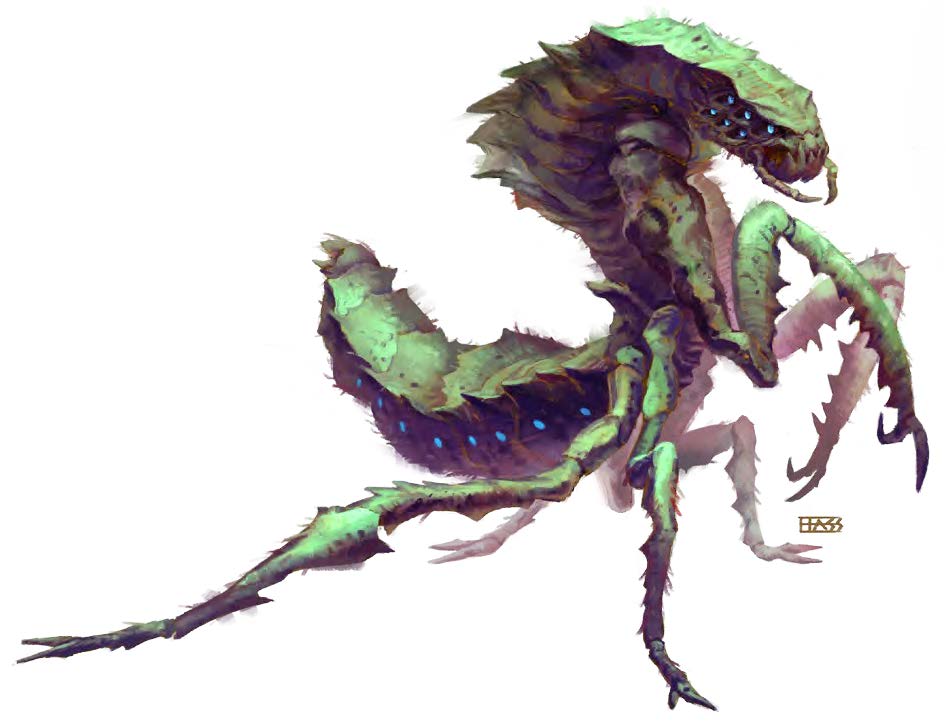
TV to Tabletop is a new series where we take ideas from popular fantasy TV and movies and translate them to D&D terms. Use them in your own game as is, rename them to hide your sources, or get inspiration for your own new ideas!
The Witcher is a popular video game and 2019 Netflix show, both based on a book series by the same name. This dark fantasy drama features a monster hunter, known as a witcher, whose superhuman strength and tolerance for toxic potions allow him to battle the forces of darkness across the Continent.
Potions
Witchers rely on potions to help them battle the evil denizens of their world. The video game has a host of potions that can be brought into D&D. These potions usually involve some combination of local herbs, alcohol, and monster parts.
In the world of The Witcher, these are rare and exotic concoctions, brewed by the witchers themselves. In D&D, adventurers might come across them more often and might not need to make them personally.
Rather than list each potion in a magic item format, we’ll tell you up front that for D&D purposes, these are all Potion, Common.
- Bindweed. You gain resistance to acid damage for 1 hour.
- Black Blood. For 1 hour, whenever a creature within 5 feet of you hits you with a melee attack, that creature takes 1d6 acid damage.
- Blizzard. While you aren’t wearing heavy armor, gain +1 AC for 1 hour.
- Cat. You gain darkvision, 60 feet for 1 hour.
- De Vries’ Extract. You gain truesight, 60 feet for 1 minute.
- Full Moon. You gain 1d4 + 4 temporary hit points for 8 hours.
- Golden Oriole. You gain resistance to poison damage for 1 hour.
- Kiss. You gain resistance to piercing and slashing damage from nonmagical weapons for 1 minute.
- Maribor Forest. You gain advantage on Constitution saving throws for 1 hour.
- Swallow. You regain 1d4 hit points at the start of each of your turns for 1 minute unless you start your turn with 0 hit points.
- Tawny Owl. If you consume this potion during a short rest, your exhaustion level is reduced by one. Otherwise, the potion has no effect.
- Thunderbolt. For 1 minute, when you hit with a melee weapon attack, you deal an extra 1d4 damage of the weapon’s type.
- White Honey. You end any disease or poisoned condition affecting you. Your toxicity level decreases by 1 and all other potions affecting you end. If you have not consumed this potion since your last long rest, drinking this potion does not increase your toxicity level.
- Willow. You cannot be paralyzed or stunned for 1 hour.
- Wolf. Your weapon attacks score a critical hit on a roll of 19 or 20 for 1 hour.
Potion Toxicity
The witcher video game features a “toxicity” score that builds as you consume potions. To simulate this, you can have characters roll on the Potion Miscibility table from Chapter 7 in the core rulebook for GMs and adapt results using your judgment. Alternatively, use the potion toxicity system here.
For each potion you drink, your toxicity level increases by 1. After you complete a long rest, your toxicity level decreases by 3 to a minimum of 0. Effects of toxicity level are shown in the table below:
| Toxicity Level | Effect |
| 1 | No adverse effects. |
| 2 | Whenever a potion effect ends, you must succeed on a DC 10 Constitution saving throw or take 1d6 poison damage and become poisoned for 1 hour. |
| 3 | Whenever a potion effect ends, you must succeed on a DC 15 Constitution saving throw or take 2d6 poison damage and become poisoned for 1 hour. |
| 4 | Whenever a potion effect ends, you must succeed on a DC 20 Constitution saving throw or take 4d6 poison damage and become poisoned for 1 hour. While you are poisoned this way, your movement speed is halved. |
| 5 | Whenever a potion effect ends, you must succeed on a DC 20 Constitution saving throw or drop to 0 hit points and become poisoned for 1 hour. While you are poisoned this way, your movement speed is halved. |
Creatures
The Continent is full of horrible creatures that witchers are tasked with slaying. Here’s one.
Kikimore
Kikimores are large insectoid monsters that work together and live in an ant-like hierarchy with a queen, warriors, and workers. In the Netflix series Season 1 Episode 1, the witcher fights a single kikimore with eight limbs and a humanlike head. This kikimore stat block uses toxicity levels as described above. If you are not using the potion toxicity system, creatures that fail the saving throw against its Toxic Bite become poisoned instead.
KIKIMORE
Large Monstrosity, Neutral Evil
Armor Class 16 (natural armor)
Hit Points 95 (10d10 + 40)
Speed 30 ft., climb 30 ft.
| STR | DEX | CON | INT | WIS | CHA |
| 17 (+3) | 12 (+1) | 19 (+4) | 6 (−2) | 10 (+0) | 8 (−1) |
Skills Athletics +6
Damage Resistances bludgeoning, slashing, and piercing from nonmagical weapons that aren’t silvered
Damage Immunities poison
Condition Immunities poisoned, stunned
Senses darkvision 60 ft., passive Perception 10
Languages —
Challenge 6 (2,300 XP) Proficiency Bonus +3
Many Appendages. The kikimore has 8 limbs. If it takes 15 or more slashing damage from a single attack, it loses a limb. If the kikimore has fewer than 4 limb, it cannot make Arm Spike attacks.
ACTIONS
Multiattack. The kikimore makes two Arm Spike attacks. If both attacks hit a Medium or smaller target, the target is grappled (escape DC 14), and the kikimore makes a Venomous Bite attack on it.
Arm Spike. Melee Weapon Attack: +6 to hit, reach 10 ft., one target. Hit: 12 (2d8 + 3) piercing damage.
Toxic Bite. Melee Weapon Attack: +6 to hit, reach 5 ft., one target. Hit: 12 (2d8 + 3) piercing damage and the creature must succeed on a DC 15 Constitution saving throw or take 9 (2d8) poison damage and its toxicity level increases by one. A minute after its toxicity level increases this way, it must make a Constitution saving throw based on its current toxicity level as if a potion ended its effect. If a creature gained multiple toxicity levels this way, it makes only a single Constitution saving throw 1 minute after the most recent increase.
BONUS ACTIONS
Fling. One creature grappled by the kikimore is thrown up to 30 feet in a random direction and knocked prone. If the thrown target strikes a solid surface, the target takes 3 (1d6) bludgeoning damage for every 10 feet thrown. If the target is thrown at another creature, that creature must succeed on a DC 14 Dexterity saving throw or take the same damage and be knocked prone.
For more unusual additions to your 5E D&D game, check out Tome of Heroes, Kobold’s meaty book of completely playtested player options. New races, class options, items, spells, and more—Tome of Heroes is an essential expansion to every D&D game!


Thanks for that. I’ve a player wanting to play a similar character to the TV series. I think the potion system combined with an Eldritch Knight sub-class will really work now!